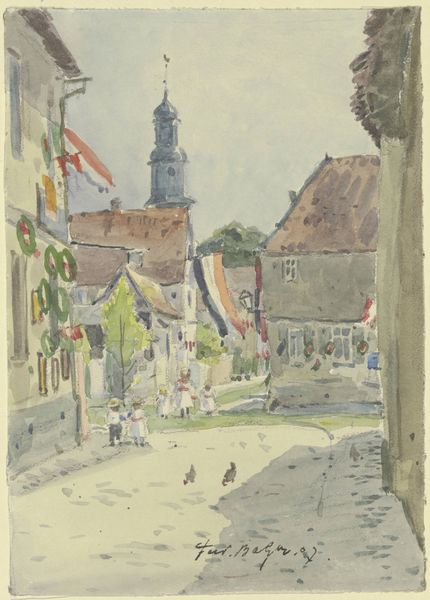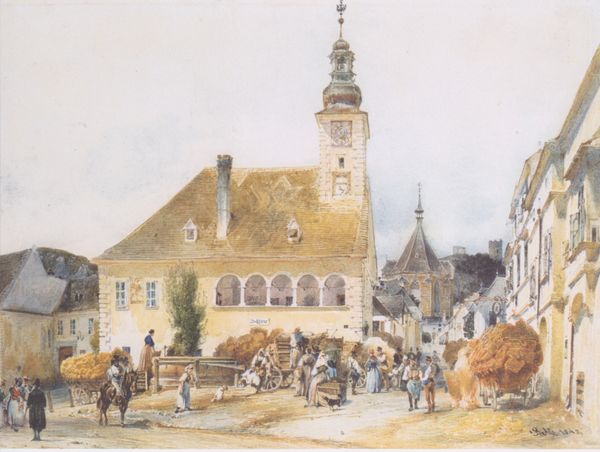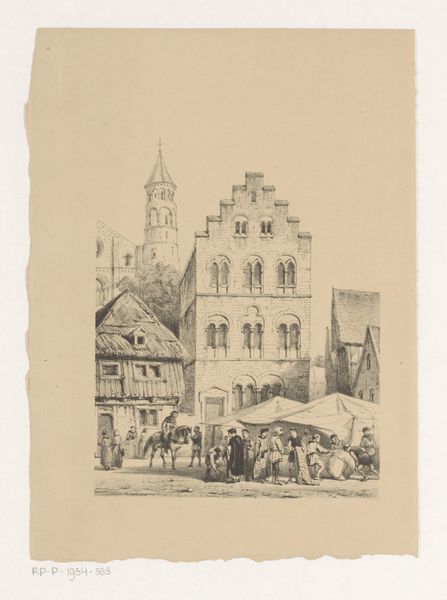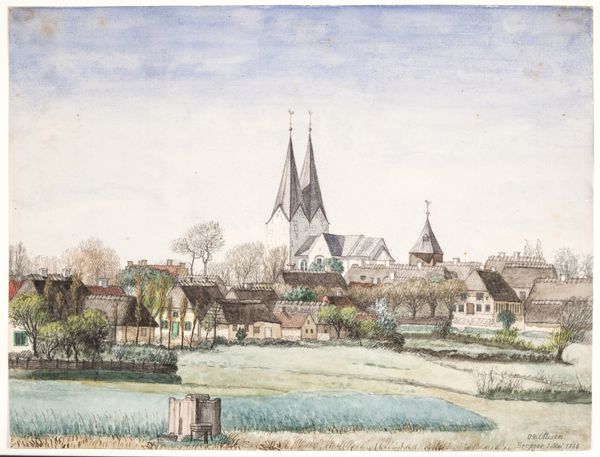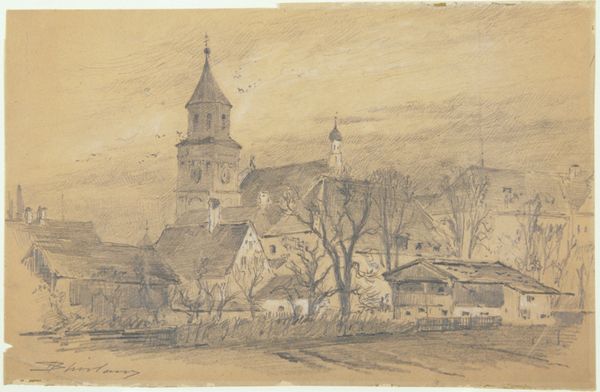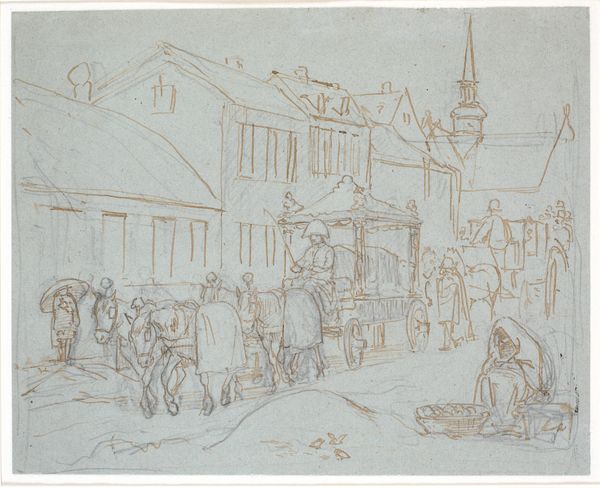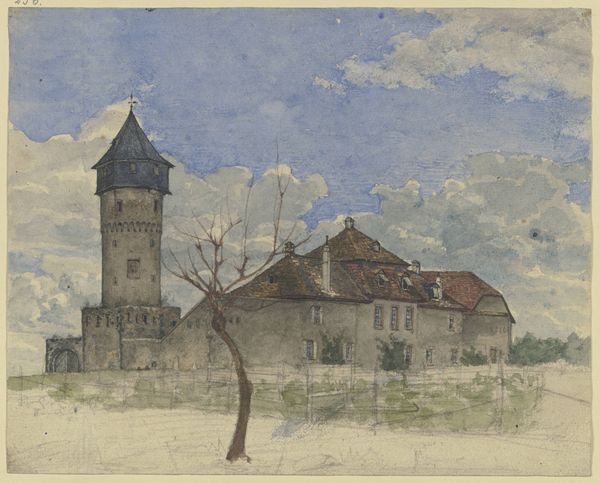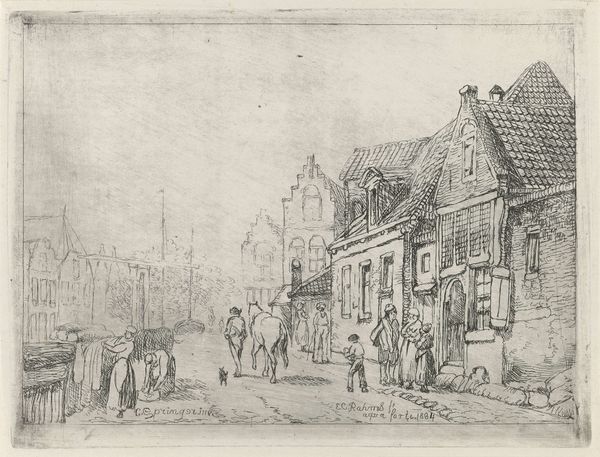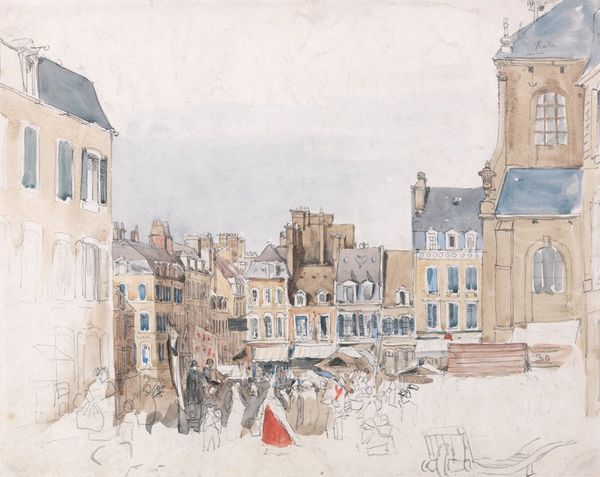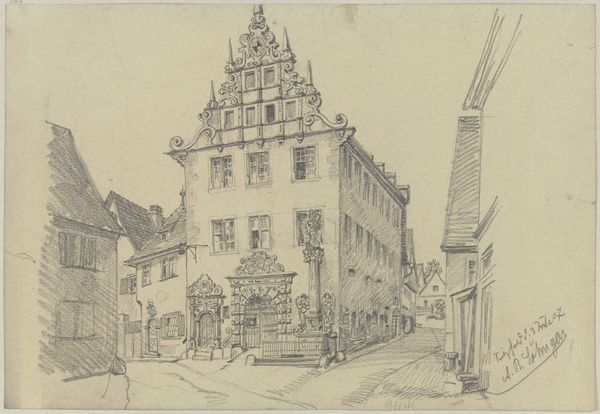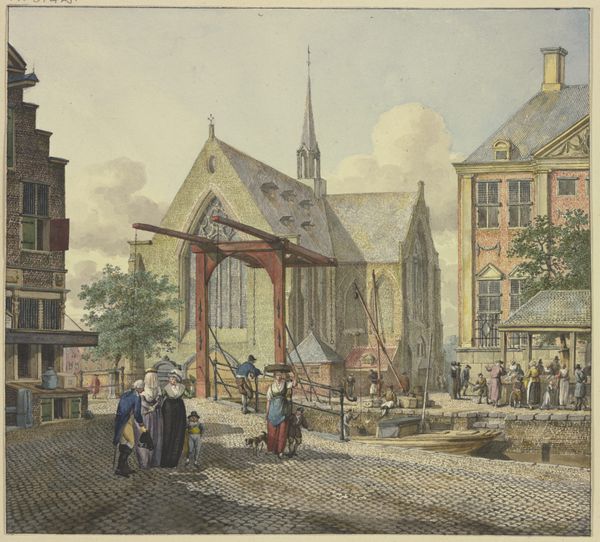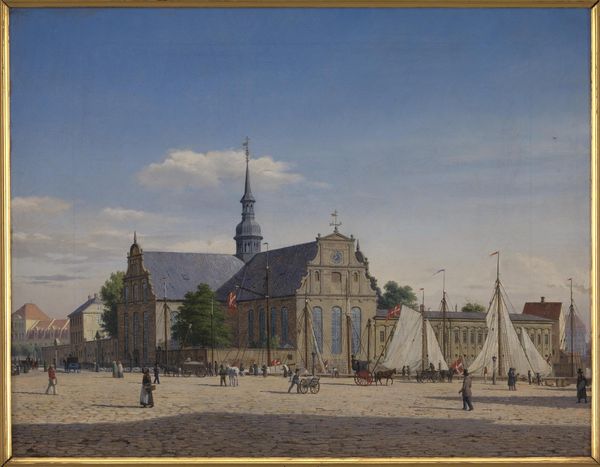
painting, watercolor
#
painting
#
landscape
#
perspective
#
watercolor
#
romanticism
#
cityscape
#
genre-painting
#
watercolor
Dimensions: 17.1 x 23.4 cm
Copyright: Public domain
Curator: Rudolf von Alt's 1842 watercolor, "The Town Hall in Mödling," offers a delicate yet bustling cityscape. What strikes you initially about this scene? Editor: The luminosity. The watercolor technique lends such a light touch; it’s as though the scene is breathing, but there's also a tangible sense of daily life unfolding in this space. Curator: Absolutely. Consider the period – the rise of the Biedermeier era, an aesthetic intertwined with burgeoning bourgeois culture. Von Alt's work here engages with a desire to represent ordinary life, filtered through a Romantic lens. Editor: I’m immediately drawn to the materiality on display here. The carts laden with goods, the clothing of the figures… it speaks to the movement of commodities and people in this localized economy. What’s fascinating is how von Alt captures both the buildings and their relation to this circulation of labor. Curator: Indeed. Von Alt situates the town hall, an emblem of authority, amidst this flow. Think about the architecture itself – notice how it integrates a classical influence? What kind of political and social hierarchies does this choice reflect during a time of revolutionary murmurings? Editor: I’m seeing a tension here, though. The grand structure juxtaposed with the humble market activities creates an intriguing social document. It’s the very labor, those transactions, the very substance that gives the buildings around a reason to stand. Curator: Precisely. The seemingly simple genre scene provides a window into the social stratification and power dynamics of its time. This seemingly idyllic depiction invites us to ask complex questions about class and agency. Editor: The layers of craft here extend beyond painting alone; think about the materials that went into building this whole community, into all the commerce represented on the street. Watercolor lets you hint at so much using so little. Curator: The painting, like any artwork, is a historical artefact, encapsulating an ideological perspective. Deconstructing this perspective reveals profound insights. Editor: Seeing these intersections of building, labor, and circulation lets you almost taste the culture from this era. The whole experience is transformative, seeing something in the round.
Comments
No comments
Be the first to comment and join the conversation on the ultimate creative platform.
